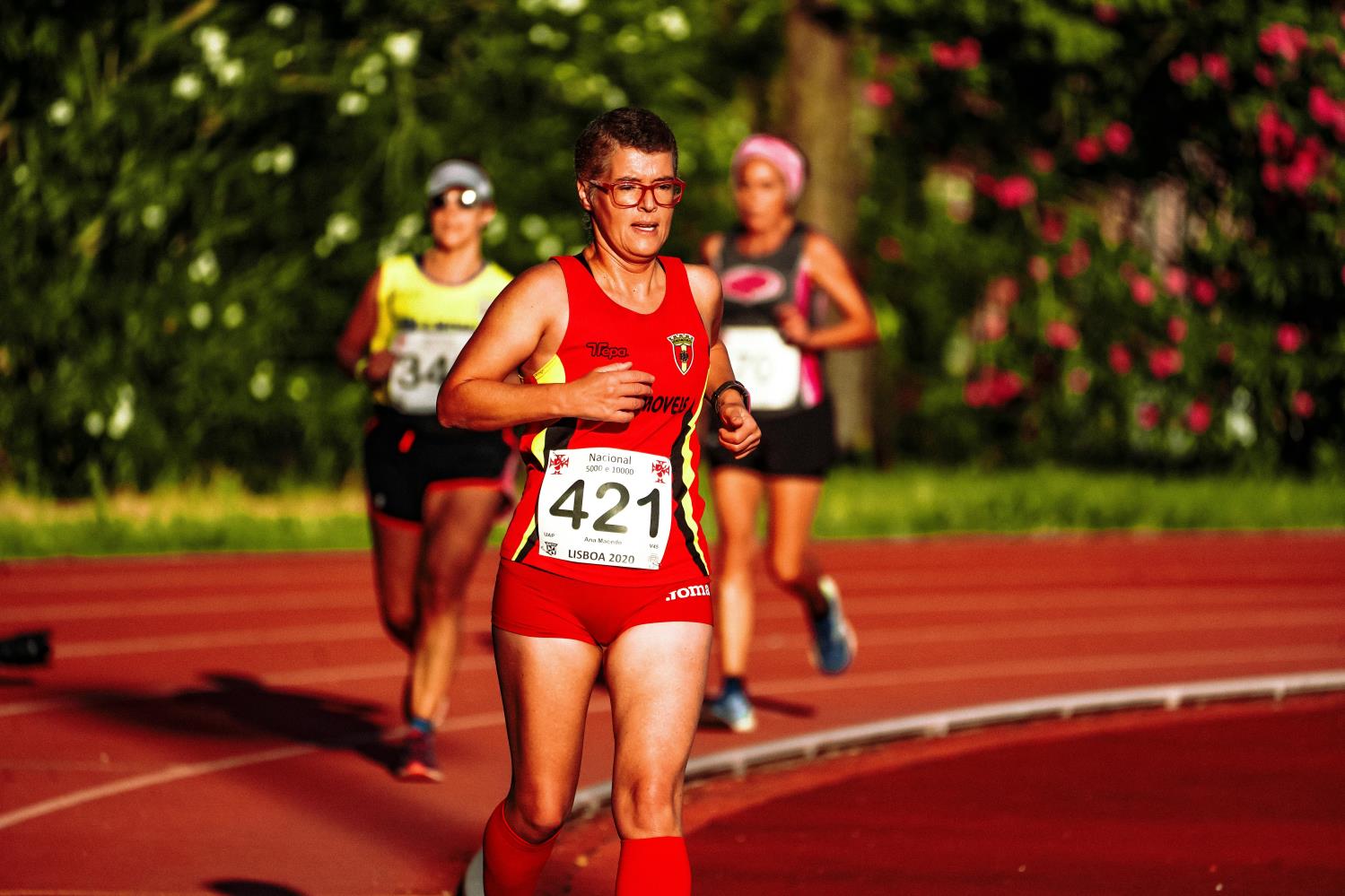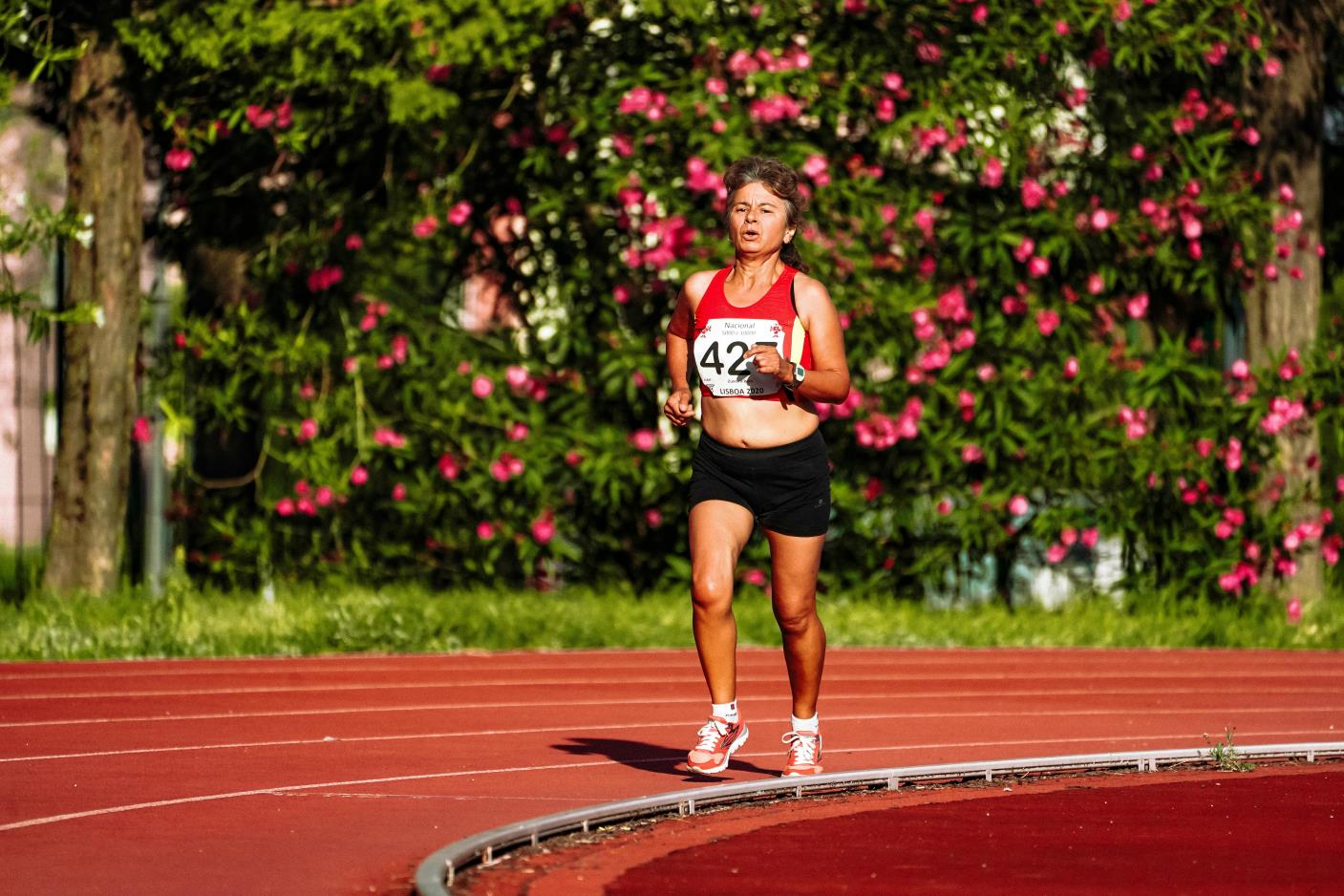What are Fartlek sessons and can you do them all year round?
 Karen Parnell
October 24, 2021
Karen Parnell
October 24, 2021

What are Fartlek sessons and can you do them all year round?
What is Fartlek?
When should you add Fartlek Training Sessions into your Training Plan?
Fartlek runs have become very popular because they are highly effective and simple but when should you do them in your training?
The key point about Fartlek training is unlike High Intensity Interval Training (HIIT), Tabata (20sec/10sec) or other training intervals sessions you don’t stop between intervals, you just change speed down. So, Fartlek can be defined as “continuous training with interval training.”
The late, great Swedish coach Gosta Holmer was often referred to as the father of the Fartlek (Swedish for "speed play"). Holmer's Scandinavian athletes utilized Fartlek training year-round, but during base phase training in particular, as he felt athletes too often let go of gear-changing work during this build-up. "During transitional periods and close to peak competitions, we always do quicker work," said Holmer. "Too often we forget about the need for shifting work and, most commonly, we do so as we begin to build the miles."
One of the best reasons to choose Fartlek training over interval training is that it simulates a real race more so than an interval run does. When doing a Fartlek, it just isn't possible to run at maximum capacity during your speed pieces and then continue on for more miles without a break.

Download your FREE trail running 8-week training plan.
Benefits of Fartlek Sessions
There are many benefits to incorporating a Fartlek run into your training plan, including:
- Variety
- Speed
- Improved focus
On our longer runs adding a bit of speed play into the session will inherently add variety and stop any boredom creeping in. Fartlek runs can be done anywhere, on the trails, road, or treadmill. Fartlek sessions will help with speed and endurance and give you confidence in a race to change speed to overtake or sprint finish if you need to. A fartlek forces you to make active decisions mid-run, to adjust your pace and challenge yourself and hence improve your focus.
Fartlek sessions can be unstructured or structured but always continuous. They remind the body how to change gears and engage different muscle fibres. Based on this they can be incorporated all year round in any phase of your periodised plan.
In a recent study by Bharathidasan University where they tested the effect of Fartlek training on muscular endurance among cross country runners and they concluded after twelve weeks the experimental group significantly improved their muscular endurance as cross country runners. They also found that the experimental group had achieved significant improvement on muscular endurance than the control group. The improvement was 17.5% in 12 weeks!
How can we build this training into the Base, Build, Peak and Taper phases of our training? Some ideas are detailed next.

Get your FREE guide to Running Technique
Base-Phase Fartlek
Base or General Preparation phase is where you will plan to maintain or build you cardiovascular fitness.
As you begin your base training, be certain to plan some Fartlek work into each of your training weeks. These workouts can be as simple as some very subtle gear changes during 1 to 2 runs as you slowly build your volume. If you have never done any Fartlek work, here is an example workout. Always remember to warm up well before each session with dynamic movements and running drills.
- During your longest run of the week, run a 1-minute surge every 6 or 7 minutes. This surge is not terribly hard, perhaps only 10 to 15 seconds per kilometre faster than your normal long-run pace.
- At the end of the 1-minute surge, simply return to your relaxed rhythm. If you have a hard time returning to "normal" long-run rhythm, then you are running the surges too quickly.
After your sessions it’s good to do static stretches and foam roller if it works for you.
This work will teach you how to change gears as well as deal with bad patches during race efforts.
Another Fartlek workout particularly effective during base building is one where random pick-ups are thrown in throughout the run. A pickup is simply running for a sustained period at a faster pace than you would typically do your long run.

Download your FREE trail running 8-week training plan.
Build or Specific Preparation
In this phase you will move to more sport specific training where the intention is to build neuromuscular movement patterns.
After the requisite weeks of base building, you should look toward your specific event preparation phase. With that change comes a change in the type of Fartlek work you should do. Fartlek sessions become more overtly strength-based and more designed around current (and future goal) fitness.
Descending Tempo Fartlek
- Begin this session with a 6-minute piece at roughly your anaerobic threshold, or close to half-marathon pace
- The recovery is half of the time of the piece (in this case 3 minutes)
- Run a 5-minute piece slightly quicker than the 6-minute piece (with the rest now being 2 minutes 30 seconds)
- Run a 4-minute piece a touch quicker (2-minute rest), 3 minutes of pick-ups (with 1 minute 30 seconds recovery), 2-minutes of pick-ups (1-minute recovery)
- Finish with a 1-minute piece. The final two pieces of this fartlek should be working into the current 5K fitness range.
- For more advanced, longer distance athletes, begin with a 7-minute piece and go all the way down to 1-minute.
Downcycle Fartlek: Also known as progression pieces, these are pick-ups that begin a bit slower and finish faster.
- After warming up, run a 2 minute 30 second pick-up beginning with the first 30 seconds only 5 to 10 seconds faster than your normal training pace. Each subsequent 30-second block should be a touch quicker than the previous with the final 30 seconds (from 2 minutes to 2 minutes 30 seconds) being at or slightly faster than 10K fitness or race pace
- Recover with 90 seconds easy jogging
- Run another 2-minute 30 seconds pick-up the same way
Run two sets, or a total of four pick-ups, which will take 16 minutes, including recovery.

Get your FREE guide to Running Technique
Peak or Competitive Phase
Include some aerobic capacity Fartlek in one of these sessions in the Peak phase. It won’t take much to maintain your seasonal gains. A total of 3 to 5 minutes of Zone 5 (power, pace or effort – heart rate is not an effective way to gauge intensity for such brief intervals) in one session should do it. This could be done during or following a race-like simulation workout.
A great way to include these Fartlek Zone 5 efforts is to include this in a Brick session run. So, if you Brick run is 15 minutes then add in 1 minute in Z5 every 5 minutes or 1 minute of Z5 every 2 minutes.
Race Phase or Taper
This involves the last 6 or 7 days before your big race. The main aims are to maintain your fitness, eliminate any traces of fatigue and to prepare mentally. Every athlete has their own way of tapering for a race, but research suggests that you should reduce the training volume and frequency, but not necessarily your intensity. Fartlek sessions can replicate racing and the random changes in speed at the start, during the race and the sprint finish so are useful sessions to incorporate into training sessions.
Sharpening Fartlek
As with any well-designed training program, fartlek can be implemented in many different ways from the controlled strength of long-run surging to the most specific anaerobic development sessions. The latter, while needed little, are still important parts of your training and can developed with sessions such as:
- 6 x 45-second fartlek pick-ups with full recovery jog (2:00 to 3:00 between each)
- 15 to 20 x 20 to 30 second pick-ups with full recovery jog.

Get your FREE guide to Running Technique
Conclusion: When to Fartlek
Fartlek is an excellent way to transition your fitness from each training phase to the next, from base training to race phase. When executed properly, these fartlek workouts can take you to new heights. A recent study showed that in as little as 12 weeks you can improved your running muscular endurance by 17.5%!
We have focussed on running here but this can also apply to cycling and swimming.
Download your FREE trail running 8-week training plan.
Get your FREE guide to Running Technique
Would you like a free training plan? Claim your free plan or e-book.
Karen Parnell is a Level 3 British Triathlon and IRONMAN Certified Coach, 8020 Endurance Certified Coach, WOWSA Level 3 open water swimming coach and NASM Personal Trainer and Sports Technology Writer.
Karen is currently studying for an MSc in Sports Performance Coaching at the University of Stirling.
Need a training plan? I have plans on TrainingPeaks and FinalSurge:
I also coach a very small number of athletes one to one for all triathlon and multi-sport distances, open water swimming events and running races, email me for details and availability. Karen.parnell@chilitri.com
Get your FREE Guide to Running Speed and Technique
Get your FREE Swim Workouts for Triathletes E-book
Get your FREE Open Water Swimming Sessions E-Book
FAQ: Fartlek training
What is fartlek training?
Fartlek, which means "speed play" in Swedish, is a training method that involves varying the intensity of your workouts by alternating between periods of fast and slower-paced efforts. It's a flexible and unstructured form of training that allows athletes to adapt their speed and effort levels based on their individual capabilities and training goals.
What is the history of fartlek training?
Fartlek training was developed in the 1930s by Swedish coach Gösta Holmér. Holmér introduced this training method as a way to simulate the varied and unpredictable demands of cross-country running. He believed that combining different intensities during training could better prepare athletes for the varying paces encountered in races.
How does fartlek training work?
Fartlek training involves alternating between periods of faster-paced efforts and recovery periods. The faster-paced efforts can be structured, such as running at a hard pace for a certain distance or time, or they can be unstructured, where you increase your speed spontaneously during a training session. The recovery periods are typically at a slower, more comfortable pace.
What are the benefits of fartlek training?
Fartlek training offers several benefits for athletes:
- Increased aerobic capacity: Alternating between high-intensity efforts and recovery periods helps improve your cardiovascular fitness and stamina.
- Enhanced speed and endurance: Fartlek training can improve your speed by challenging your body to sustain faster paces over varying distances. It also builds endurance as you gradually increase the overall volume of the workout.
- Mental toughness: The unstructured nature of fartlek training helps develop mental resilience by simulating race-like conditions and teaching you to adjust your effort levels on the go.
- Versatility: Fartlek training can be adapted to various sports and fitness activities, including running, swimming, and cycling, making it a versatile training method for athletes in different disciplines.
- Fun and variety: Fartlek workouts offer a refreshing change from traditional, steady-state training. The ability to adapt the pace and effort level during a workout can make training more enjoyable and engaging.
How can fartlek training be applied to swimming and cycling?
Fartlek training principles can be applied to swimming and cycling as well:
- Swimming: In swimming, fartlek training can involve alternating between faster and slower laps or incorporating bursts of high-intensity swimming into a steady-paced workout.
- Cycling: Fartlek training on a bike can be achieved by varying your speed and intensity during a ride. You can include sprints or increase your effort level during specific intervals, followed by periods of recovery or easier cycling.
How often should I incorporate fartlek training into my routine?
The frequency of fartlek training sessions depends on your fitness level, training goals, and overall training program. It's recommended to start with one or two fartlek sessions per week and gradually increase the frequency as you become more comfortable and conditioned.
Is fartlek training suitable for beginners?
Fartlek training can be adapted to suit different fitness levels, including beginners. Beginners may start with shorter intervals and slower-paced efforts, gradually increasing the intensity and duration over time as their fitness improves.
Are there any precautions to consider when doing fartlek training?
It's important to listen to your body and gradually progress your efforts during fartlek training. Be mindful of your technique and form, and ensure you have a proper warm-up and cool-down to minimize the risk of injury. If you have any underlying health conditions or concerns, consult with a healthcare professional before engaging in fartlek training or any new training program.
Remember, fartlek training is a versatile and enjoyable way to improve your fitness, speed, and endurance. Incorporate it into your training routine to add variety and challenge yourself in a fun and dynamic way.
References
THE EFFECT OF FARTLEK TRAINING ON SOME HORMONES AND SPEED ENDURANCE IN (400) METERS RUNNERS 62de23b44e9c90.62328933.pdf (jcreview.com)
https://en.wikipedia.org/wiki/Fartlek
#swimmingtrainingplan #cyclingtrainingplan #runningtrainingplan #swimming #cycling #running #fartlek
.jpg)
Photo by Jack Lemon on Unsplash
